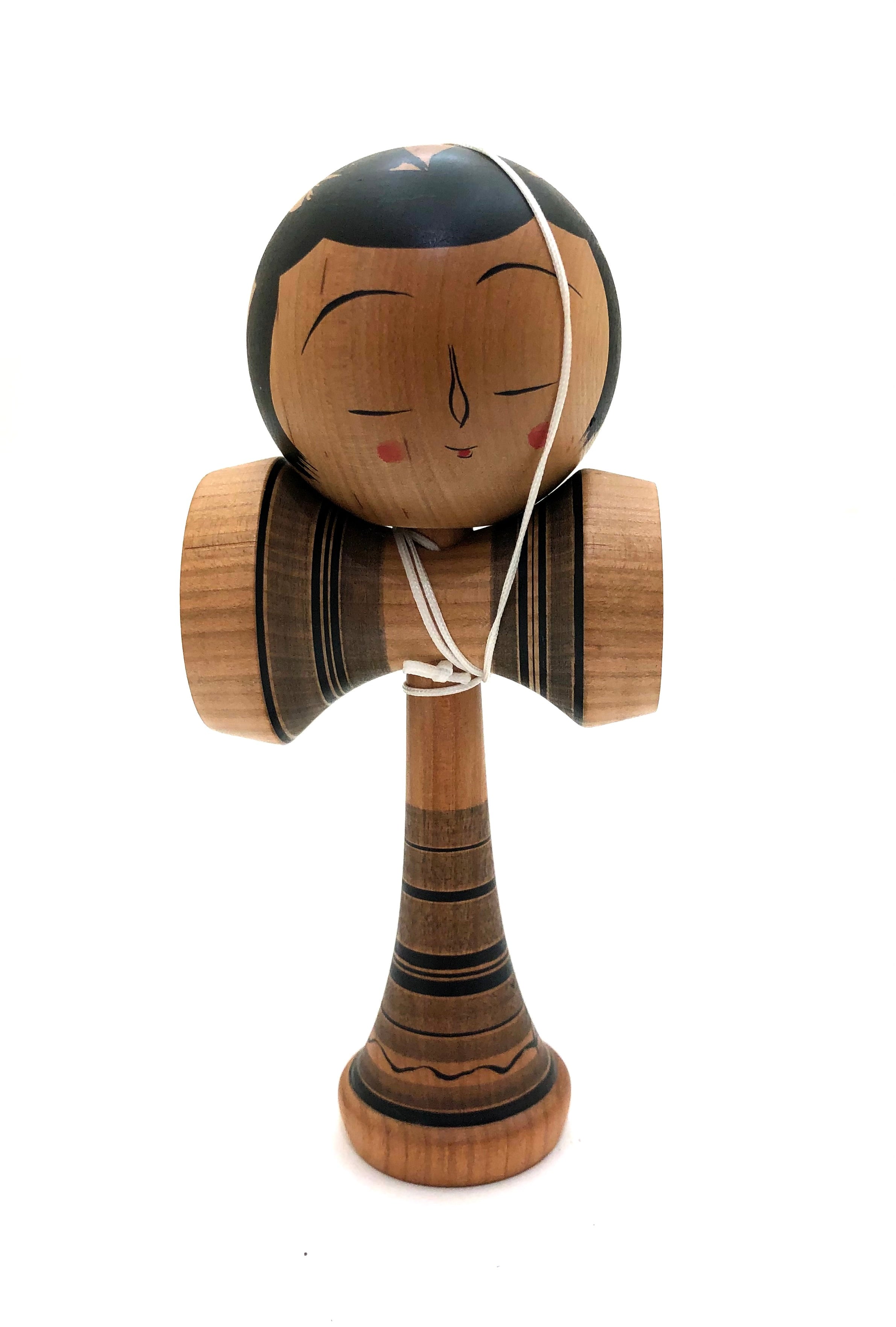
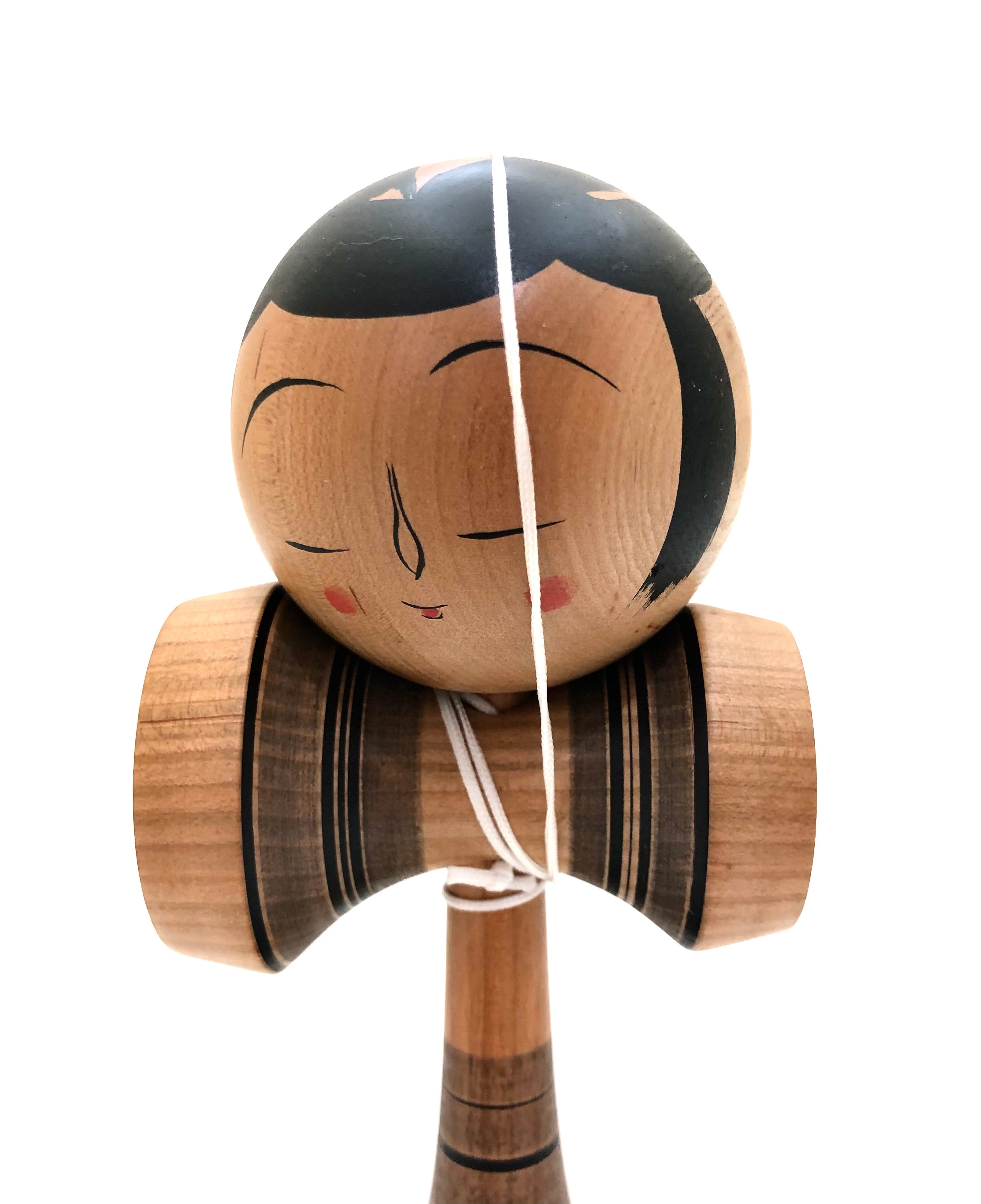

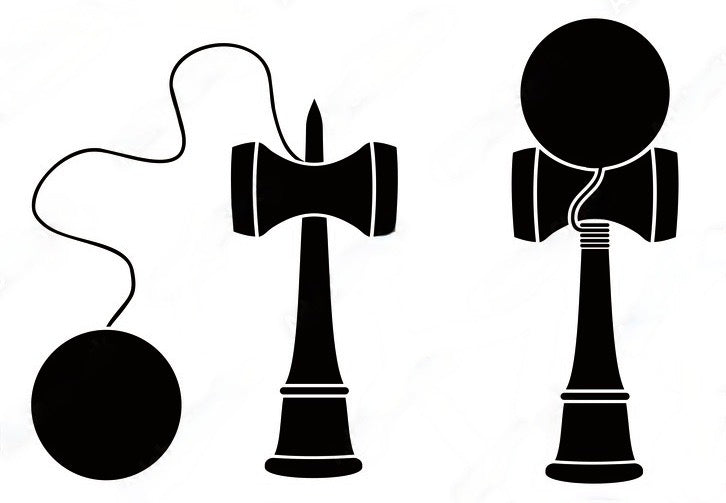
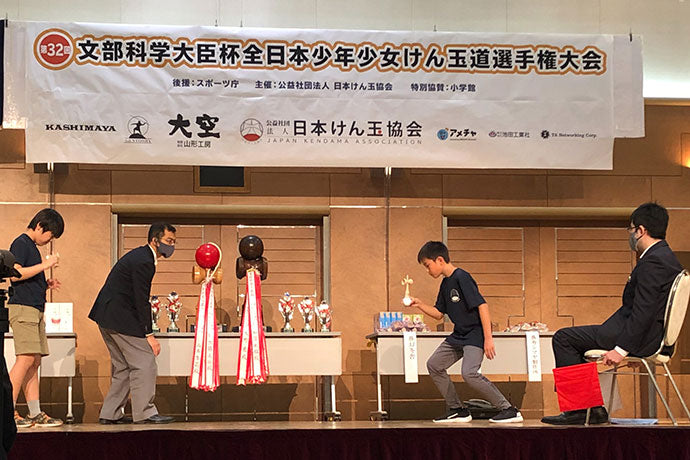
Vintage Japanese Kokeshi Kendama Toy (Nichigetsu Ball) with Yajirou-kei Head by Mamoru, Fumio, Tsuta Family
Dimension: 6-0”h
Offered is a very RARE and Beautifully expressive vintage Kendama toy (“sword [and] ball") and represents a traditional Japanese skill toy. It consists of a handle (ken), a pair of cups (sarado), and a ball (tama) that are all connected by a string. It is said to strengthen hand-eye coordination, balance, and reflex and is known for the “tricks” that can be played in villages and provincial competitions.
What makes this more collectible and higher in price than the typical or contemporary Kendama is its graphic design conceived by the Yajirou Kokeshi family. The creators of this type of Kendama hail from the small farming village of Yajirou-machi near Kamasaki Onsen in Miyagi Prefecture, once a farming village between two, tall mountains. The kiji-shi (woodworkers), divided their time between farming and wood-craft, specifically Kokeshi dolls and Kokeshi toys.
All the graphics on the body are in black and have a hand-painted collar with horizontal stripes encircling the body, as in the Rokoru moyo style (fine, varying widths of line-work) which also appear encircling the arms/cups for catching the ball. An additional interesting feature is the painted feature of its head with a face that has one lid and a cat or pick-shaped nose. The piece is made of white dogwood, (mazuki). The piece is signed by Mamoru-san on the lower portion of the base of the figure. This is a true collector's item for those who admire the Kendama toy.
Additional Historical Information— As Japan entered the Meiji era (1868–1912), the Ministry of Education, Science, Sports, and Culture (equivalent to Japan's modern-day Ministry of Education, Culture, Sports, Science, and Technology) introduced kendama in the report on children's education that it put together in 1876, and the game gradually began to catch on among young people. In 1919, during the Taisho era (1912–1926), the Yajirou-kei (family) introduced this forerunner of today's mass-produced kendama. It was called Nichigetsu Ball (sun-and-moon ball), because the ball looked like the sun, while the shape of the shallow cups was like a crescent moon. Beginning of the Showa era (1926–1989), a variety of kendama was promoted throughout Japan. The image from the Japan Kindama Association shows the National Competition is still alive.
See our e-book entitled: A Collector’s Guide: Traditional and Creative Kokeshi and Toys: https://mingeiarts.com/collections/our-books/products/a-collectors-guide-traditional-and-creative-kokeshi-and-toys
Condition: Excellent meaning that the piece retains its original craft/workmanship and functions as intended, showing a wonderful-developed patina for its age. The toy is void of damage, cracks, breakage, or repairs and meets all the standards of the collectible Vintage Traditional Kokeshi Toys.
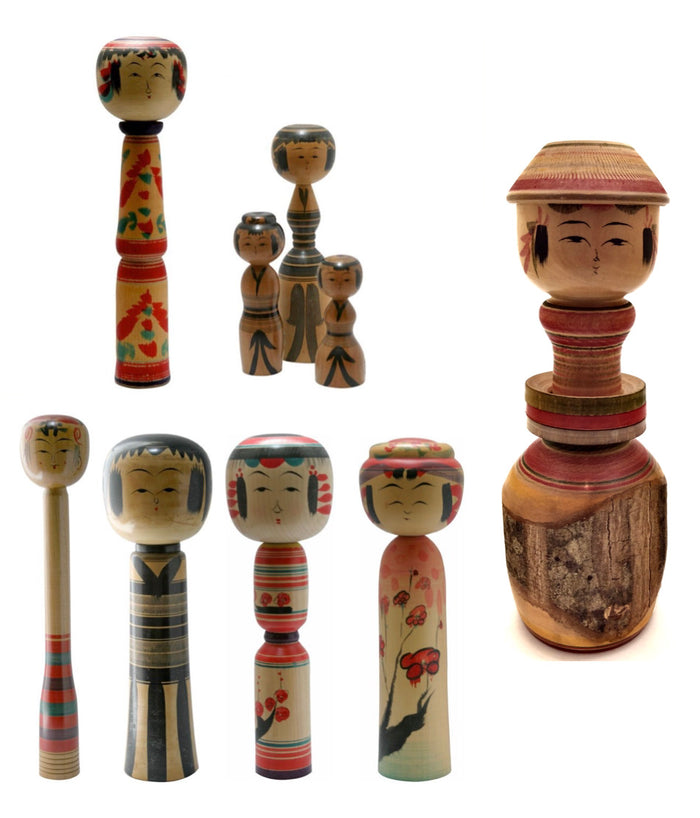
Japanese Traditional Kokeshi
Yajirou-Kei (Family)
Prefecture: Miyagi
Origin:
This strain of Kokeshi is said to have been an offshoot of the Tougatta strain and is far less refined. That eventually developed into a unique style that remains today. The creators of these dolls hail from the small farming village of Yajirou-machi near Kamasaki Onsen, in Miyagi Prefecture, once a farming village between two tall mountains. The Kiji-shi (woodworkers) divided their time between farming and woodcraft. Those who made kokeshi in their spare time sent their wives to the nearby Kamasaki Onsen to sell their work to tourist shops and onsens.
Collector's note – characteristics/painting style:
The majority of this style has distinct waists, or (kubire), where the body tapers inward, with a wider, flared base similar to a kimono, thus making them very stable. The upper body usually has a hand-painted collar with horizontal stripes encircling the body, as in the Rokoru-moyo style, and vertical stripes running below the waist to the base of the doll. However, Yajirou dolls can also be found with a series of chrysanthemum petals running down the front of the body, or a branch of plum blossoms, as the only decoration. Yajirou dolls are some of the most brightly painted of the traditional family group. Utilizing a veritable rainbow of colours, from the usual red and black to green, yellow, and even blue and purple, they are available in probably the widest range of shapes. Some also have a painted beret-like feature or a bun on their heads, similarly painted with a red center spot. Less common are Yajirou who have conical hats known as Suge-Gasa. Typically seen is one lid or double eyelids and a cat or pick-shaped nose. Yajirou kokeshi have been made from cherry wood, camellia, and maple, but the preferred wood is white dogwood, (Mizuki). And finally, both Yajirou and Tougutta dolls are sometimes created with loose rings circling the waists. Carved from the same wood as the body, which is a very meticulous method! This treatment is referred to as 'Yamiyo' style kokeshi.

Leading, Craftsmen:
Niiyama, Keimi, 1925, (Shirabu, Yamagata) - Master Niiyama, Keimi. No additional published information
Niiyama, Fukutaro, 1898-1965 - No additional published information
Niiyama Fukuo, 1922, (Yajiro Shironishi, Miyagi) - Master: Niiyama, Fukutaro. No additional published information
Niiyama, Hisaharu, 1942-2008 - No additional published information
Niiyama, Sanai (Master) - No additional published information
Oizumi, Kiyoni - No additional published information
Saito Masao, 1932, (Shiroishi, Miyagi) - Master: Sato, Tsugio. No additional published information
Sato Tatsuo, 1928-2009, (Yajiro Shiroishi , Miyagi) - Master: Sato, Imasaburo. No additional published information
Sato Yoshiaki, 1936, (Shiroishi Miyagi) - Master: Sato, Tatsuo. No additional published information
Sato, Koichi, 1936, (Shiroishi, Miyagi) - Master:Hamatsu, Heisaburo. No additional published information
Explore & Learn More about Yajirou-Kei (Family)